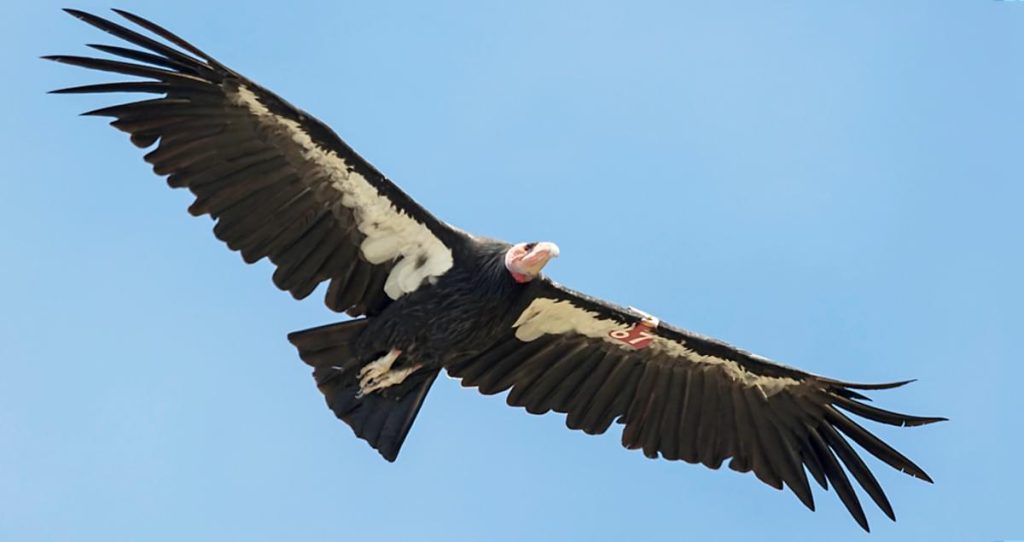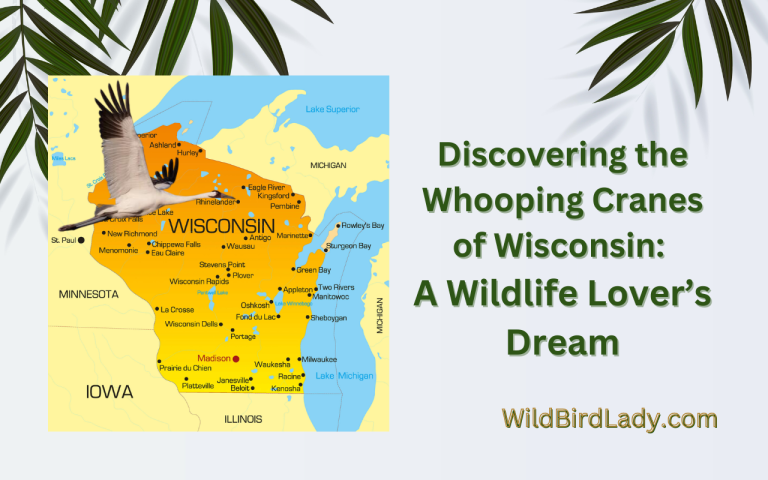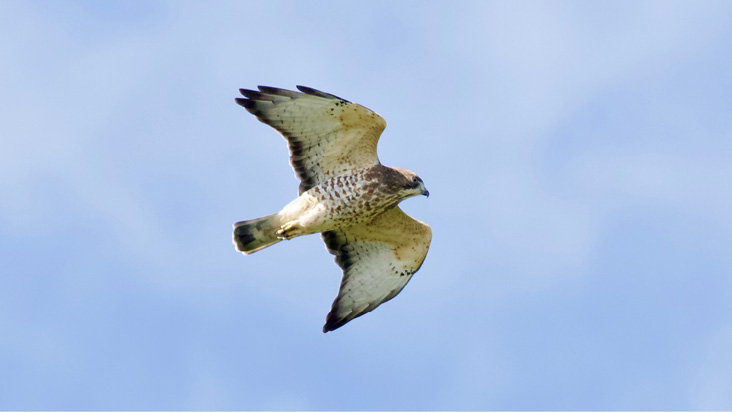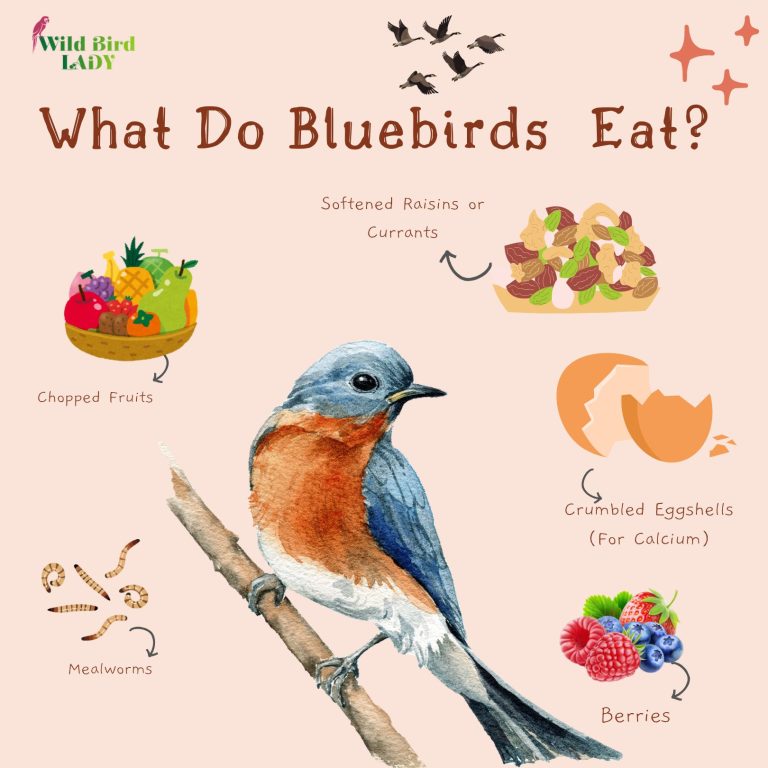5 Fascinating California Condor Adaptations You Need to Know
The california condor has five unique adaptations. These adaptations include a bare head, sharp talons, a keen sense of smell, large wingspan, and the ability to soar for extended periods.
The california condor is one of the most fascinating birds in the world. This bird’s adaptations have allowed it to survive and thrive in california’s rugged landscape. The bare head helps the california condor stay clean while eating, while its sharp talons help it catch and hold onto prey.
Additionally, the california condor has a keen sense of smell, which it uses to locate food. The bird’s large wingspan allows it to cover vast distances, and it can soar for hours without flapping its wings. In this article, we will explore these fascinating adaptations and delve deeper into the california condor’s abilities.
Physical Adaptations
California condors are among the most intriguing birds inhabiting our planet. While their size and wingspan might seem overwhelming to some, they are unique characteristics that make the condor a highly adaptable species. In this blog post, we’ll explore the physical adaptations these birds have developed to survive in their natural habitat.
Large Wingspan And Body Size
Condors have an enormous wingspan, which is one of the largest in the world, measuring over nine feet. Their wingspan is so large that they can glide in the air for several hours without even needing to flap their wings.
This skill saves the condors a lot of energy and helps them to cover a significant distance while seeking food. Their large body size, weighing between 18-31 pounds, helps them to soar through the air with ease, despite their cumbersome appearance.
Some of the advantages of their large wingspan and body size include:
- Glide for long distances with minimal energy expenditure.
- Travel great distances when searching for food.
- Create air currents to themselves glide through the air.
Bald Head And Neck
Another unique feature of the california condor is its bald head and neck. At first sight, it might seem that these birds might feel vulnerable without feathers in those areas, but that is not the case. In fact, their baldness serves an essential purpose.
Here are some advantages of the condor’s bald head and neck:
- Makes it easy for them to keep clean while feeding on carrion.
- Prevents feathers from getting covered in bacteria that could lead to infection.
- Help regulate body temperature while soaring through the air.
Ability To Fly Long Distances
Condors can fly long distances without any rest, which is an essential adaptation for survival in their natural habitat. They can spot food from a distance, and their large wingspan helps them to cover a considerable distance with minimal flapping.
This capability makes them the ultimate scavengers and allows them to survive in harsh and arid environments.
Here are a few notable advantages of their long-distance flight adaptation:
- Powerful respiratory system that enables them to endure long flights.
- Allows them to exploit uncommon food sources with ease.
- Get ahead of fast-moving development changes and quickly adapt to new environments.
Role Of Physical Adaptations In Survival
It is incredible how these physical adaptations developed over time to help condors thrive in different environments. These unique adaptations allow them to function efficiently and continue reproducing over time.
The physical adaptations described above are some of the exciting characteristics that make the california condor a very adaptable bird species. The condors’ ability to glide for extended periods and fly long distances, combined with the bald head and neck, enable them to survive in harsh and ever-changing environments.
Their physical characteristics serve as perfect reminders that our planet is host to incredible creatures with fascinating survival strategies.
Behavioral Adaptations
Behavioral Adaptations Of California Condors
The california condor is one of the most intriguing birds in north america. With only a few dozen members left in the wild, this species relies on a wide range of adaptations to survive. Among the most important of these adaptations are behavioral characteristics, which help the birds find food, communicate with each other, and mate successfully.
In this section, we will explore three key aspects of the california condor‘s behavior: social hierarchy and communication, nesting and breeding habits, and foraging and scavenging habits.
Social Hierarchy And Communication
- California condors are highly social animals, and they rely on a complex system of communication to coordinate their activities.
- Social hierarchy plays a major role in condor behavior, with dominant birds receiving the most food and mating opportunities.
- Condors communicate with each other through a variety of vocalizations, including grunts, hisses, and snorts.
- To maintain social order, the dominant birds will often engage in aggressive behavior, such as pecking, biting, and chasing.
Nesting And Breeding Habits
- California condors are monogamous animals, which means that they mate with one partner for life.
- The birds build their nests in caves, cliffs, or other hard-to-reach locations to protect their eggs from predators.
- Female condors lay a single egg each year, which both parents take turns incubating for roughly 56 days.
- After hatching, the young condor stays in the nest for up to 6 months before taking its first flight.
Foraging And Scavenging Habits
- California condors are scavengers, which means they primarily feed on dead animals.
- To find food, the birds rely on their incredible sense of smell, which allows them to locate carrion from miles away.
- Because they feed on such a wide variety of organisms, condors play an important role in maintaining ecological balance within their habitat.
- Despite their large size and formidable beaks, condors are often outcompeted for food by other scavengers, such as vultures.
Importance Of Behavioral Adaptations In Survival
- Behavioral adaptations are essential for the california condor’s survival, as they allow the species to find food, mate, and raise offspring successfully.
- Without these adaptations, the condors would be less able to compete with other scavengers, find sufficient food sources, and maintain social order.
- Conservationists working to protect the condors must remain mindful of these behaviors to better safeguard the survival of this endangered species.
Unique Adaptations
California condors are one of the most fascinating bird species that exist in the world. They have adapted to their environment in unique ways, making them an incredibly interesting topic for anyone interested in birds. This blog post will cover the unique adaptations of california condors, focusing on their reproductive, diet, and human adaptation.
Reproductive Adaptations
California condors have a unique approach to reproduction that sets them apart from other bird species. Here are some key points:
- They mate for life, and both parents take on the responsibilities of parenting.
- Their breeding season is from december to april, during which time they use natural cavities or large nest platforms to lay their eggs.
- The young hatch after about 56 days, and both parents feed them regurgitated food until they are ready to fledge at about 6 months of age.
Diet Adaptation
California condors have adapted to their environment by feeding on a unique diet that includes:
- Carrion: They primarily feed on the carcasses of large animals such as deer and cows, which they locate with their keen eyesight and sense of smell.
- Bone marrow: They use their powerful beaks to open the bones of dead animals and consume the marrow.
Adaptation To Humans
California condors have had to adapt to the encroachment of humans on their habitat. Here are some key points:
- Habitat loss: Human development and habitat destruction have caused the condor’s habitat to shrink, forcing them to relocate or adapt to new environments.
- Lead poisoning: Often condors are attracted to carcasses that have been hunted with lead-based ammunition, causing lead poisoning. To circumvent the issues of lead poisoning, the us government initiated the use of copper bullets.
The above-discussed adaptations make california condors unique and fascinating creatures of the avian world.
Thermal Regulation
Overview Of How California Condors Regulate Body Temperature
California condors, with their wingspans stretching up to almost 3 metres, are one of the largest flying birds in the world. These majestic creatures, like all living organisms, need to regulate their body temperature to maintain their health and homeostasis.
Here are some fascinating facts about how california condors achieve thermal regulation:
- California condors are endothermic birds which means their metabolism generates heat internally.
- They reduce their metabolic rate during the hottest part of the day, conserving energy and water consumption.
- They have a unique feature called the gular pouch which cools down the bird by evaporative cooling. The bird expels excess body heat by breathing out through the gular pouch.
- California condors have featherless heads which helps them manage heat loss and gain from direct sunlight by exposing their skin to regulate their body temperature.
Importance Of Thermal Regulation For Survival
Thermal regulation significantly impacts the birds’ survival and well-being. It is a crucial adaptation for california condors to cope with the extreme temperatures of their arid environments. Here are some more details about the importance of thermal regulation for their survival:
- Maintaining optimal body temperature helps in proper digestion and absorption of nutrients.
- It helps in reducing water loss through sweating and panting.
- California condors need to soar high in the sky to locate food, and thermal regulation helps regulate energy levels and performance.
- Failure to regulate body temperature can lead to severe dehydration and heat exhaustion, potentially leading to death.
These facts and adaptations reveal how california condors have developed unique mechanisms to manage their body temperature successfully. Understanding the importance of thermal regulation for their survival highlights how these creatures have adapted to their environment, showcasing their remarkable resilience and strength.
Flight Adaptations
The california condor has some of the most fascinating adaptations in the bird world, and their flying ability is no exception. Here are some key points:
- The condor has a wingspan of up to 9.5 feet, which allows them to soar for long distances with minimal effort.
- Soaring helps the condor conserve energy while searching for food, and they take advantage of updrafts to effortlessly gain altitude.
- The bird’s keen eyesight allows them to spot carrion from high in the air, which is key for their scavenging habit.
- When threatened by predators such as golden eagles, the condor uses its impressive wingspan and aerodynamic body to maneuver and perform evasive aerial maneuvers.
Flight adaptations are crucial for the california condor’s survival in the wild, and their ability to soar for miles and use their exceptional vision to locate food has made them one of the most impressive birds in the world.
Digestive Adaptations
Overview Of The Unique Digestion Process Of California Condors
The california condor has a unique digestive system that sets it apart from other birds. Their digestive process is crucial for their survival and diet sustainability. These are some of the key points to consider:
- California condors are scavengers and eat carrion, which can contain bacteria and harmful toxins that could kill other animals. However, their digestive system is incredibly acidic, with a ph level of 1-2, which allows them to break down and eliminate harmful pathogens from their food.
- Their digestive system is also highly efficient, with a food passage rate of around 25 hours. This means they can consume a lot of food very quickly, which is essential for survival in their harsh ecosystem.
- California condors have a special digestive adaptation called “boluses”. Boluses are lumps of undigestible parts of their prey, such as bones, fur, and feathers, that condors regurgitate after they finish eating. These boluses prevent the build-up of undigested material in their stomachs and allow them to consume more food.
Importance For Survival And Diet Sustainability
The unique digestive adaptations of the california condor are vital for their survival and diet sustainability. The following are some of the reasons for this:
- Their acidic digestive system allows them to consume carrion that could kill other animals. This enables them to survive in arid regions, where other animals may struggle due to the scarcity of food.
- The rapid food passage rate is crucial for their survival as they need to consume as much food as possible when they find it. This is especially important during the breeding season when they need to provide food for their offspring.
- The boluses they produce help remove undigestible material from their bodies, preventing the build-up of toxins that could harm them. This, in turn, allows the condors to continue feeding on carrion without getting sick.
The unique digestive adaptations of the california condor are a remarkable feat of evolution, helping these birds survive in a challenging environment. Their efficient digestive system ensures they can continue consuming carrion and thriving in the wild.
Courtship And Mating Adaptations
California condors are one of the most iconic and fascinating bird species in north america. Courtship and mating adaptations are particularly intriguing attributes of these birds. In this section, we will explore how california condors approach courtship and mating, and why these adaptations are important for their reproductive success and population growth.
Detailed Explanation Of The Courtship And Mating Rituals Of California Condors
- California condors begin their courtship and mating rituals with elaborate displays of their physical abilities and prowess. They perform a series of dances, vocalizations, and calling behaviors to attract their potential mates.
- These dances involve stretching their wings, standing tall, and nodding their heads. They also engage in mutual preening, which is an important aspect of their bonding process.
- Once they establish a bond, the male and female condors build a nest together, typically in a rock crevice or cliff face.
- The female lays a single egg, which both parents take turns incubating and protecting until it hatches.
- After the chick hatches, the parents continue to work together to feed, protect, and nurture the fledgling until it is old enough to leave the nest.
Importance For Reproductive Success And Population Growth
- Courtship and mating adaptations are essential factors in the reproductive success and population growth of california condors.
- Without the intricate displays and bonding rituals, males and females may not be able to attract each other and form the necessary bond to breed successfully.
- This bond is crucial because it enables both parents to contribute to the chick-rearing process, leading to a higher survival rate of the offspring.
- The success of courtship and mating adaptations also contributes significantly to the overall population growth of the california condor species, which is currently an endangered species on the brink of extinction.
The courtship and mating adaptations of california condors are fascinating to observe and essential to their long-term survival as a species. Their unique physical and behavioral characteristics are a testament to the remarkable adaptations that birds can develop over time to ensure their survival.
As humans, it is our responsibility to work towards protecting these endangered birds and their habitats by supporting conservation efforts and raising awareness about their plight.
Survival From Extinction
Explanation Of How California Condors Were On The Brink Of Extinction
The california condor is a majestic bird that holds a special place in the hearts of americans. However, it was not always a success story. In the late 20th century, the california condor was on the brink of extinction, with just 27 left in the wild in 1987.
- The major factors contributing to their decline were habitat loss, hunting, lead poisoning, and egg collecting.
- The remaining birds were captured and taken into captivity for breeding programs, which have been vital to their recovery.
Discuss Successful Conservation Efforts
Thanks to the dedicated efforts of conservationists, today the california condor population stands at around 470 birds, with more than half living in the wild.
- One of the most successful conservation efforts has been the reintroduction of captive-bred condors into their native habitats. Release sites were carefully chosen to provide suitable habitats for the birds, along with adequate food sources to support them.
- Conservationists also enlisted the help of trained “condor biologists” to monitor the birds and to address any threats to their survival. The biologists monitor nests and work to protect eggs and fledglings from predators.
- Another important conservation effort has been the reduction of lead poisoning in condors. This was achieved through outreach programs to educate hunters about lead alternatives and by implementing a ban on lead ammunition in condor habitats.
Importance Of These Efforts For The Survival Of California Condors
The impact of the conservation efforts has been remarkable, but the work is far from over. Continued efforts will be required to ensure the survival of the california condor and to restore the balance of our ecosystems.
- The california condor is a crucial part of the ecosystem because it is a scavenger that plays a vital role in cleanup duties. Thus, their continued survival is essential for maintaining healthy ecosystems.
- The success of the california condor recovery program is poised to become a beacon of hope for endangered species around the world. The california condor’s recovery has set an example for conservation practices that could be applied to other endangered species.
- The california condor’s story is not just a triumph of successful conservation efforts. It is also a reminder of the impact that humans can have on the environment and of our responsibility to make effective efforts to preserve our planet’s natural wonders for the generations to come.
Frequently Asked Questions Of 5 Fascinating California Condor Adaptations You Need To Know
What Are California Condor Adaptations For Survival?
California condors have several adaptations that help them survive, including their large wingspan of up to 9. 5 feet, which allows them to soar for hours without flapping their wings, and their sharp eyesight, which helps them spot food from great distances.
How Do California Condors Locate Food?
California condors have a keen sense of smell, allowing them to locate food from miles away. They also use their sharp eyesight to spot carrion on the ground, which they can then feed on.
How Do California Condors Protect Themselves From Predators?
California condors lack natural predators as they are at the top of the food chain. However, they may face threats from humans, and they have been known to be shot or poisoned. Conservation efforts have helped to protect these birds and ensure their survival.
Conclusion
The california condor is an awe-inspiring bird that has successfully adapted to its environment over time. Through its remarkable journey of evolution, it has developed fascinating adaptations that enable it to thrive in its unique habitat. From their featherless head to their giant wingspan, every aspect of their anatomical structure has been masterfully designed.
Their ability to soar effortlessly through the sky, navigate long distances, and locate their food source is a testament to their natural resilience. As we continue to study the california condor, we discover more exciting details about these majestic birds.
By spreading awareness of their adaptations, we can inspire others to appreciate and protect them. Every day, these birds face environmental challenges, and it is our responsibility to ensure their survival. We must make a conscious effort to learn more about these birds, celebrate their existence, and work towards preserving their species for generations to come.
Published on June 3, 2023 | Last Updated on June 27, 2025 by Rifat Ahmed








